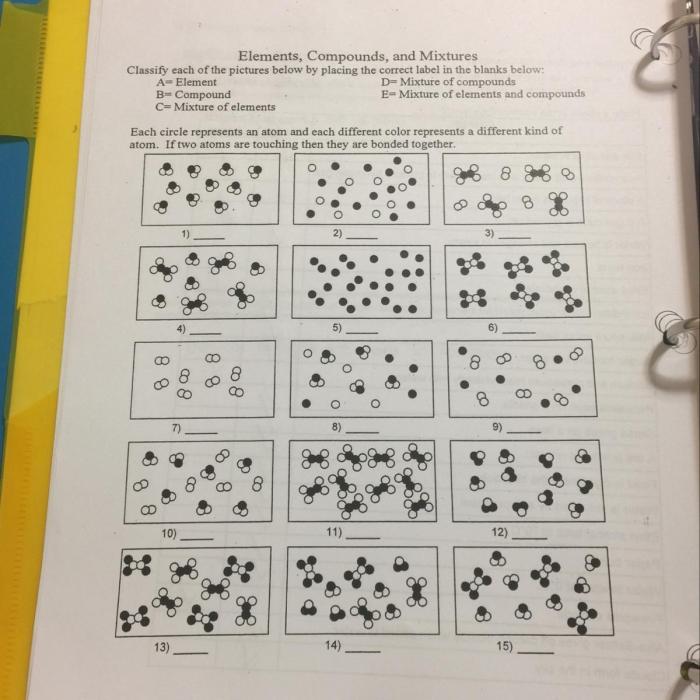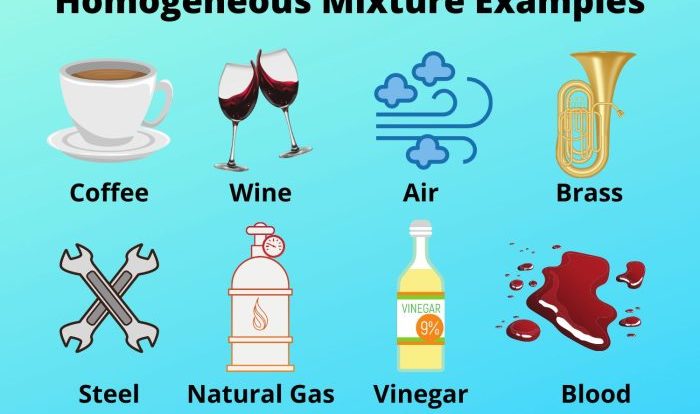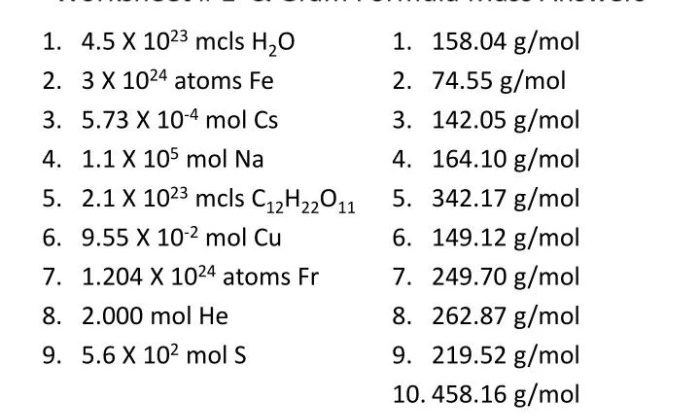Elements and compounds and mixtures worksheet – Embark on an enlightening journey into the realm of matter with the “Elements, Compounds, and Mixtures Worksheet.” This meticulously crafted guide unravels the fundamental concepts, classification, separation techniques, and practical applications of these building blocks of our universe, promising an immersive learning experience.
Delve into the captivating world of chemistry as we explore the distinct characteristics of elements, compounds, and mixtures, deciphering their intricate relationships and unraveling the mysteries of their interactions.
Elements, Compounds, and Mixtures

In chemistry, matter can be classified into three fundamental categories: elements, compounds, and mixtures. Understanding these concepts is crucial for comprehending the composition and behavior of substances.
Define and Explain Basic Concepts, Elements and compounds and mixtures worksheet
Elementsare the simplest form of matter and cannot be broken down into simpler substances by chemical means. Each element is composed of atoms with the same atomic number, which determines the number of protons in the nucleus.
Compoundsare pure substances composed of two or more different elements chemically combined in fixed proportions. They have a definite chemical formula and exhibit unique properties that differ from their constituent elements.
Mixturesare combinations of two or more substances that are not chemically bonded. They can be separated into their individual components by physical means, such as filtration or distillation.
Classifying Matter: Mixtures vs. Compounds
Mixtures and compounds are distinct categories of matter with key differences:
| Property | Mixtures | Compounds |
|---|---|---|
| Composition | Variable proportions of components | Fixed proportions of components |
| Bonding | Physical (no chemical bonds) | Chemical (chemical bonds between atoms) |
| Behavior | Can be separated by physical means | Cannot be separated by physical means |
Separation Techniques for Mixtures
Mixtures can be separated into their individual components using various techniques:
- Filtration: Separates solids from liquids based on particle size.
- Distillation: Separates liquids based on their different boiling points.
- Chromatography: Separates components based on their different interactions with a stationary and mobile phase.
Chemical Reactions Involving Elements and Compounds
Chemical reactions involve the rearrangement of atoms to form new substances:
- Synthesis: Two or more substances combine to form a new substance.
- Decomposition: A single substance breaks down into two or more substances.
- Exchange: Two or more substances exchange atoms or ions to form new substances.
Applications of Elements, Compounds, and Mixtures
Elements, compounds, and mixtures have diverse applications:
- Elements: Pure metals (e.g., iron, aluminum) are used in construction and manufacturing.
- Compounds: Water (H 2O) is essential for life; carbon dioxide (CO 2) is used in fire extinguishers.
- Mixtures: Seawater is a natural mixture of water and salts; air is a mixture of gases (e.g., nitrogen, oxygen).
General Inquiries: Elements And Compounds And Mixtures Worksheet
What is the difference between an element and a compound?
An element is a pure substance that cannot be broken down into simpler substances by chemical means. A compound, on the other hand, is a substance composed of two or more elements chemically combined in fixed proportions.
How can mixtures be separated?
Mixtures can be separated using various techniques, such as filtration, distillation, and chromatography. Each technique exploits the different physical properties of the components in the mixture.
What are some examples of chemical reactions involving elements and compounds?
Chemical reactions involving elements and compounds include synthesis reactions (combining elements or compounds to form a new compound), decomposition reactions (breaking down a compound into simpler substances), and exchange reactions (exchanging ions between compounds).


